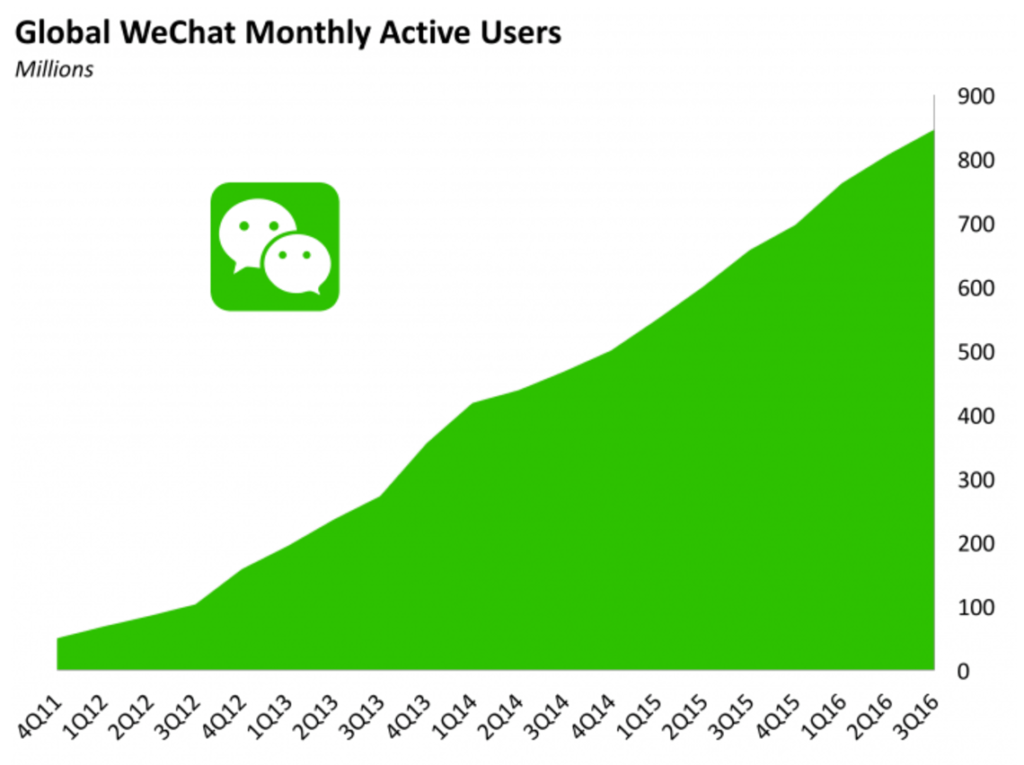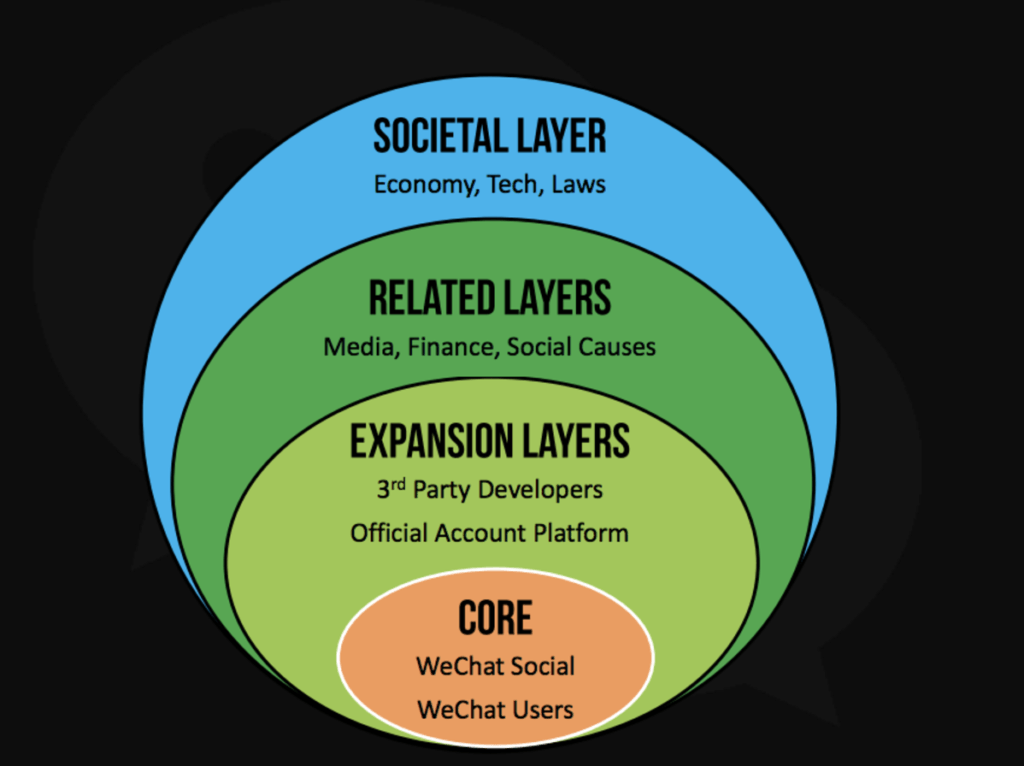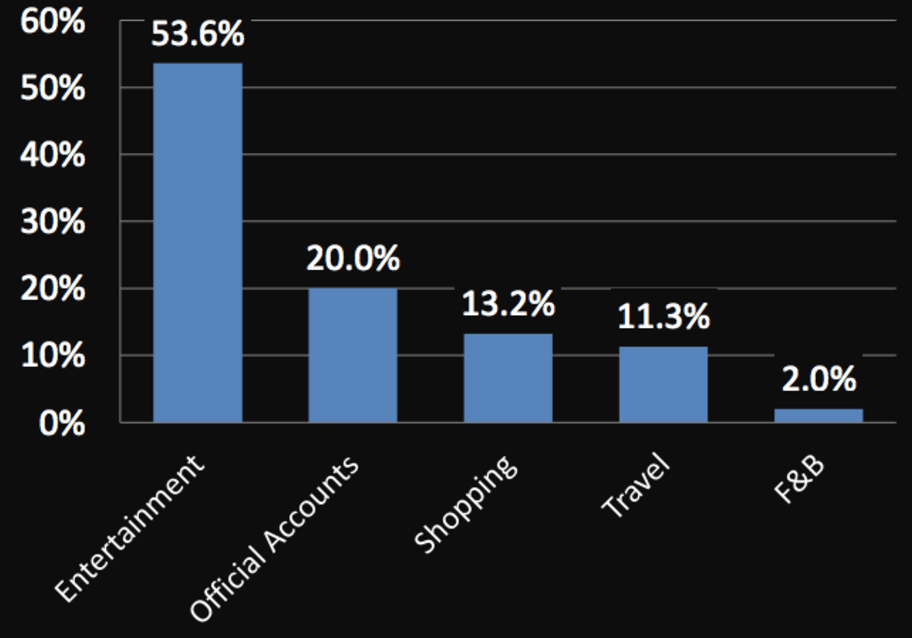WeChat – The One App That Rules Them All

Introduced as a messaging app in 2011 by Tencent, WeChat has evolved into lifestyle platform for users in China. With ~850 million monthly active users, it now offers to its users what Facebook, WhatsApp, Messenger, Venmo, Grubhub, Amazon, Uber, Apple Pay, etc. together offer in the West. The blog discusses how WeChat has used the strong network effects to emerge as the one app that rules them all.
In the mobile-first world of China, has built a ‘mobile lifestyle’ touching various aspects of users’ lives, with an average user opening WeChat 10 times a day and spending ~40 minutes per day [9]. Initially launched as a messaging app to send texts in 2011 by Tencent (one of the three Chinese tech giants – Baidu, Alibaba and Tencent), it has evolved from just an ‘app’ to a ‘platform’.

So how has WeChat done it all?
WeChat has benefitted from very strong network effects – both direct and indirect – in the Chinese mobile-first market. The more users they got onto the platform, the more other users wanted to join in order to be connected with their friends and families. Many Asian American people got onto WeChat just so they could remain connected with their relatives back in China.
Further, WeChat was smart to open up the platform to third-party developers, who started offering their services on WeChat platform. String indirect effects apply here – more users on the platform, more and more third party developers want to offer services on it, and vice versa.
With such strong network effects and low multi-homing environment, WeChat emerged as the app /platform or rather an ecosystem that rules them all.
WeChat’s payment service benefitted from the high mobile spending (e-commerce) in China as compared to US, with 87.4% of China’s Internet users regularly accessing Internet via phones. [2] In fact the Payments feature on WeChat has become a threat to Alipay. [11]
Let’s look at the incentives of WeChat, users and the brands/merchants/third party developers.
Users

- Send text/voice messages to family and friends
- Share things on social media
- Follow celebrities and brands
- Book a taxi
- Order food delivery
- Book a doctor appointment
- Buy movie tickets
- Play games
- Transfer money to peers (red envelopes)
- Pay bills – utility bills, restaurant bills, etc.
- Find geo-targeted coupons
- Read magazine articles
- Meet strangers around you
- …
In a nutshell, WeChat provides a carefully curated list of service providers. Figure 3 illustrates how WeChat has built an ecosystem of services – starting from the core (messaging/social) with different layers on top – expansion, related, and societal layers.

Most importantly, WeChat does not charge a user to sign up on the platform – it’s completely free for a user! Further, WeChat tries to ensure trust in the ecosystem by vetting and authenticating all merchants that offer services on the platform.

WeChat has over 10 million (authenticated) official accounts including celebrities, banks, media outlets, and fashion brands to hospitals, drug stores, car manufacturers, internet startups, personal blogs, and more. [1]
WeChat helps them drive user engagement through making APIs for payments, location, direct messages, voice, user IDs etc. available to these merchants. Developers are not forced to stay within look and feel of WeChat. Hence, a user gets full web-app experience, without ever leaving WeChat platform. The total annual lifestyle spending on WeChat is estimated to be $1.8B (in 2014 as shared by Tencent), mainly driven by entertainment and official accounts. [3]
Merchants also use WeChat as a CRM platform – to distribute news, offer tailor-made promotions, etc. [2]
Downloading the app is free – user doesn’t pay at all. Tencent attributes WeChat’s revenues to online advertisements ($ 1+ B) [9] and brands/merchants on WeChat platform. [8]. WeChat’s Average Revenue per user (ARPU) in 2015 was estimated to be $7 – 7x the ARPU of WhatsApp [9].
WeChat is the main reason why Tencent has become the most valuable company in Asia and among top 10 in the world. [10].
What’s next?
WeChat has almost reached saturation in Tier 1 cities in China with approximately 93% people already registered. What are the new avenues of growth? Now it’s trying to get users from other emerging markets – India, South East Asia and Latin America.
WeChat is also attempting offline integration with companies like Dan Dan Man creating Bluetooth-enabled stuffed animal toy integrated with WeChat, that can send personal voice messages to kids when you are away. [1]
Most importantly, it has also paved the path to where platforms of the west could head – Facebook and other messaging apps, etc. and has started shaping the future of mobile commerce.
Sources
- http://a16z.com/2015/08/06/wechat-china-mobile-first/?utm_campaign=Submission&utm_medium=Community&utm_source=GrowthHackers.com
- http://digiday.com/marketing/wechat-mobile-commerce/?utm_campaign=Submission&utm_medium=Community&utm_source=GrowthHackers.com
- http://technode.com/2015/02/10/wechat-impact-report/
- https://www.forbes.com/sites/jlim/2014/05/19/wechat-one-of-the-worlds-most-powerful-apps/#4ba5c38774f1
- https://www.ft.com/content/1a7a93f4-abea-11e6-9cb3-bb8207902122
- http://www.businessinsider.com/wechat-drives-tencents-q3-revenue-growth-2016-11
- http://expandedramblings.com/index.php/wechat-statistics/
- https://techcrunch.com/2016/11/16/tencent-q3-2016/
- https://qz.com/179007/wechat-is-nothing-like-whatsapp-and-that-makes-it-even-more-valuable/
- http://fortune.com/2016/09/05/tencent-most-valuable/
- https://www.tencent.com/zh-cn/investor.html



Thanks Mohit for the awesome post! It’s inspiring how WeChat is paving the path for Tech companies in the West; however, I do think some of this success is to be attributed to the specific context of China. Given the free market dynamics, do you think some company in the West could ever gain as much power as WeChat?
Onaizah – thanks for bringing up this intriguing question. Agree that WeChat’s success is partly due to firewalled Internet and cultural differences in China. (refer https://techcrunch.com/2017/02/21/facebook-on-course-to-be-the-wechat-of-the-west-says-gartner/).
But the wave has already begun in the West. For example, Facebook Messenger has been spun off (from facebook app) as an independent app. With the introduction of Facebook Chatbots, facebook is trying to make messenger a platform not just for messaging, but also to interact with businesses (eg. Expedia, Burger King, 1-800 flowers, WSJ, etc.) – all AI controlled. Further, you can also make peer-to-peer money transfer on messenger (much like Venmo). Similarly, Amazon Alexa, as we discussed in the class, is trying to be similarly integrated platform. iMessages has started it’s own mini-app store (with Kayak, Dropbox, Foodler, yelp, Opentable, Airbnb, Tinder and Coffee meets bagel, etc).
Many of these mini-apps are just engagement apps but few have moved to transaction stage too, which is what WeChat has done. In a nutshell, the move has definitely started but I don’t think it’s going to be a winner-take-all market. These platforms are serving (and will serve) different use cases – text vs voice, home/personal vs office, etc. and hence will remain in harmony with each other. Rest only time will tell how this space pans out.